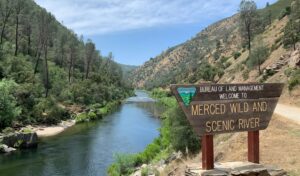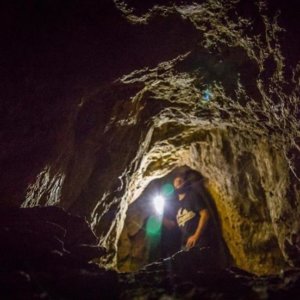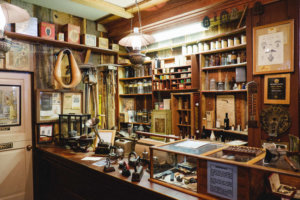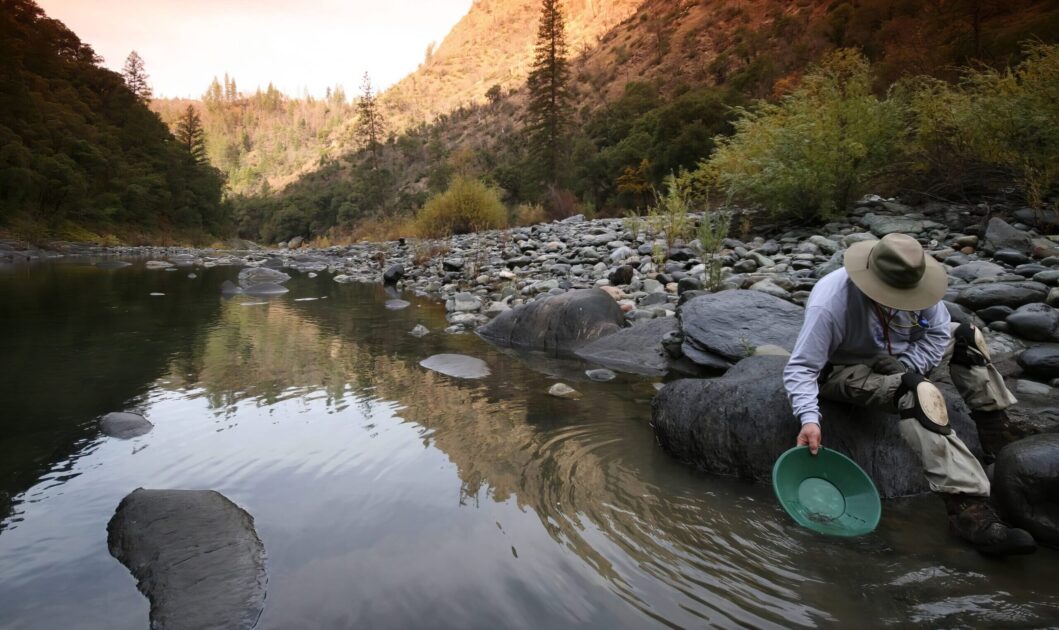Since the first time a weary traveler spotted a gleaming speck of gold dust in the Merced riverbed, people have been hooked on the idea of finding gold on their travels to Mariposa County. Gold Fever sets in the moment you find your first piece and is guaranteed to awaken a new affinity for gold panning that simply cannot be explained. Even today, billions of dollars are spent trading, collecting and searching for gold, whether it’s in the form of a coin or the raw stuff that can be found beneath the cold waters of rivers and streams when you pan for gold in Yosemite and across the Western United States.
History of Gold Panning
In 1848, gold was discovered at Sutter’s Mill near modern-day Sacramento, California. Over the next two years, more than 300,000 people made their way to California in a search for gold and riches in what would come to be known as the California Gold Rush.
Mariposa County sat at the southern end of what was called “The Mother Lode” a stretch of land spanning the western slope of the Sierra Nevada from Tahoe down to Yosemite National Park, making it one of the key locations for gold prospecting. Today this stretch of land is known as California’s Gold Country.
There were a number of ways to find gold, but one of the most popular was Gold Panning due to its low cost of entry point. All you really needed was a pan and a river to hope to strike it rich.
What is Gold Panning?
Gold panning is a form of placer mining in which gold prospectors use a pan to extract gold from placer deposits in rivers, streams or creeks. The practice dates back well before the Gold Rush to when the ancient Romans first tried their hand at panning.
The process is simple: identify a placer deposit, then scoop out some of the materials and water from the river bed into your pan. The water is then agitated and the heavier materials, such as gold, sink to the bottom.
Although some say the days of easy pickings are long gone, there’s still plenty to be found by gold panning in the historic Mother Lode. The hope to “strike it rich” is something people have shown an interest in for many years, which has led to a consistent popularity in panning for gold.
Turning Gold Panning into a Hobby
Today, many people consider themselves hobby gold panners, and the practice is easy to get into since the needed materials are inexpensive and easily acquirable. The best way to get a start is to make your first foray in gold panning one with a guide who knows where the gold-rich rivers and creeks are on Bureau of Land Management sites.
Can You Pan for Gold in Yosemite?
In short, no. Everything, from the animals to the rocks and any gold, is protected by the National Park Service, so leave everything in Yosemite where you found it. However, you can still strike it rich at quite a few places within Mariposa County.
Below, you will find a guide to gold panning locations around Yosemite and Mariposa County. This guide covers open, natural locations along the Merced River, as well as formal attractions such as the California State Mining and Mineral Museum. Some places will show you how to pan for gold (for free) and some offer extensive lessons at a cost. Check with individual gold panning locations for details. Also, make sure to check if your lesson will provide gold-panning equipment, as some locations may not. Happy panning!
- Yosemite Mountain Sugar Pine RailroadClimb aboard a narrow gauge steam train for an authentic Western experience. With the long soulful whistle and steady puff of steam you’ll know you are headed out on an […]Read More

- Merced River Recreation Management AreaEnjoy a variety of activities at the Merced River Recreation Management Area which is located between the town of Mariposa and Yosemite National Park. The area includes three first-come first-served […]Read More

- Yosemite CrystalsYosemite Crystals is Mariposa’s one-stop shop for local crystals, gold prospecting supplies, and gold tours.Read More

- Mariposa Museum & History CenterThe Mariposa Museum & History Center is an award-winning small museum. The museum’s collection presents an authentic picture of people and life in Mariposa, concentrating on the Gold Rush and […]Read More

Is it worth Panning for Gold?
The experience alone is worth its weight in gold. Its a chance to get in touch with a bygone era, and at least for a little while, feel like you’re a prospector trying to strike it rich in the Gold Rush. However, if your goal is to strike it rich, there is very little chance you’ll pan enough gold to retire.
Is It Legal to Pan for Gold in California?
Yes, but not everywhere. Never gold pan in a National Park. However, some California State Parks, Bureau of Land Management Areas and National Forests may allow the activity. Be sure to check with the local jurisdictions before setting off.
Where Is The Best Place to Pan for Gold?
In Mariposa County, the Merced River outside of Yosemite National Park is likely the most popular and easily accessible area. However, contacting a local guide will help enhance the experience with potential better and lesser know streams and creeks.

